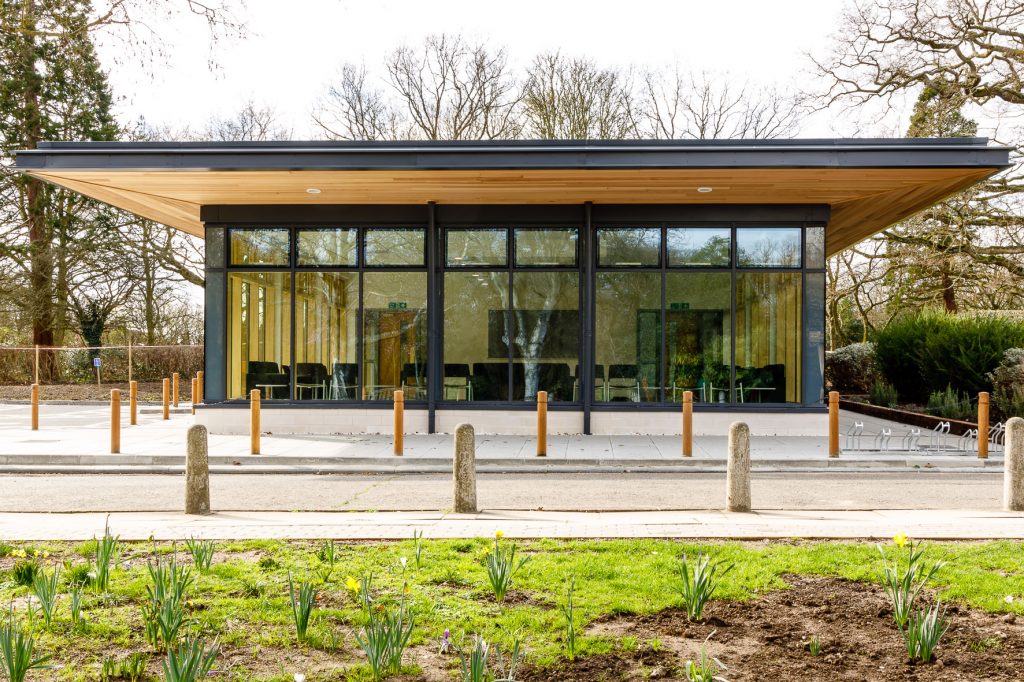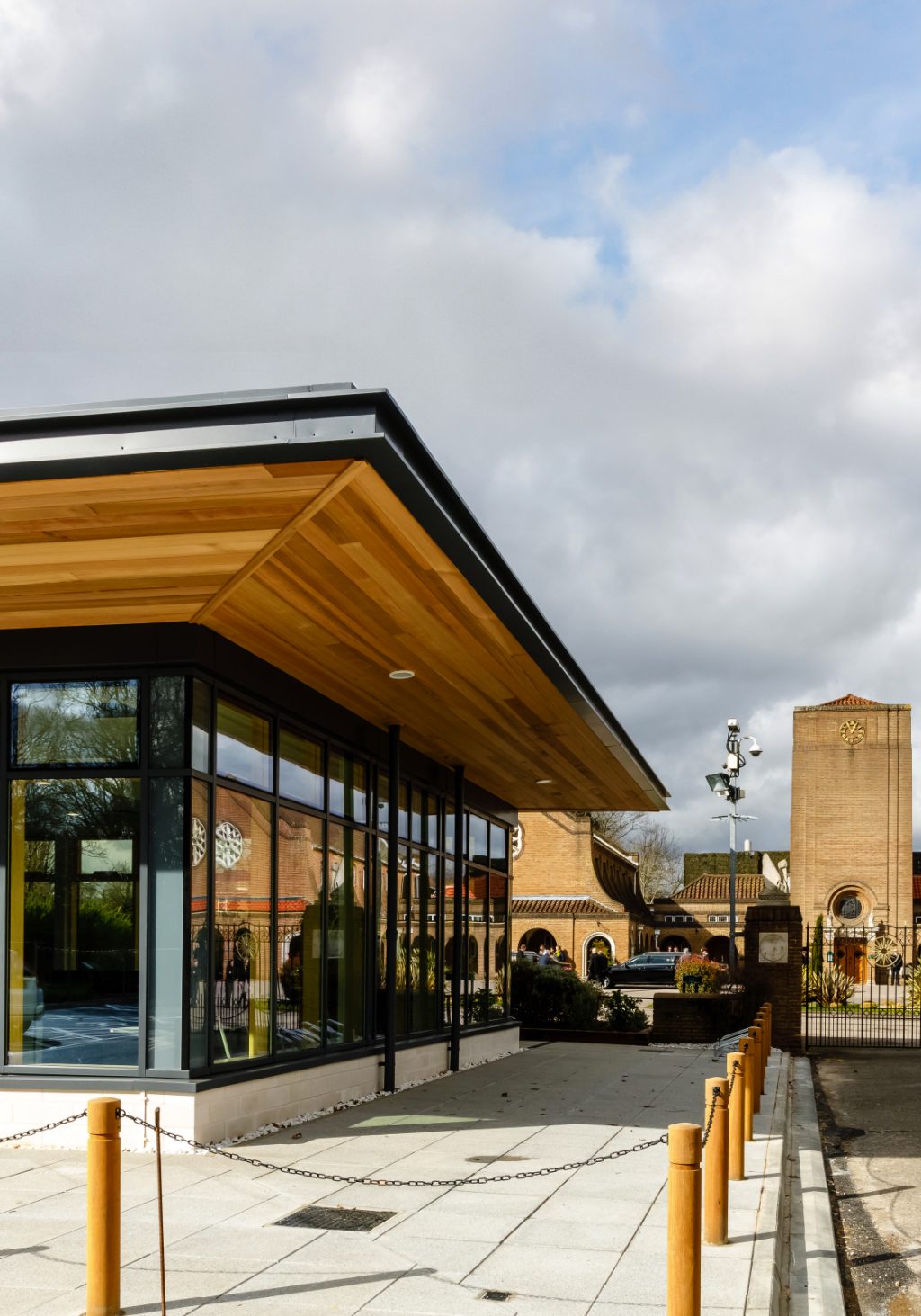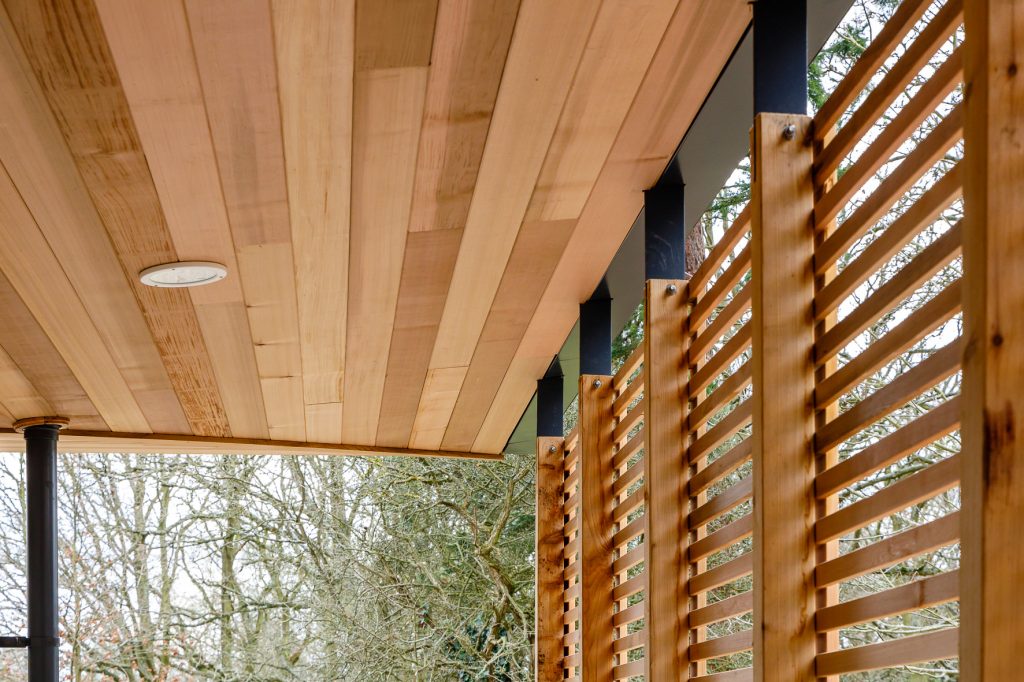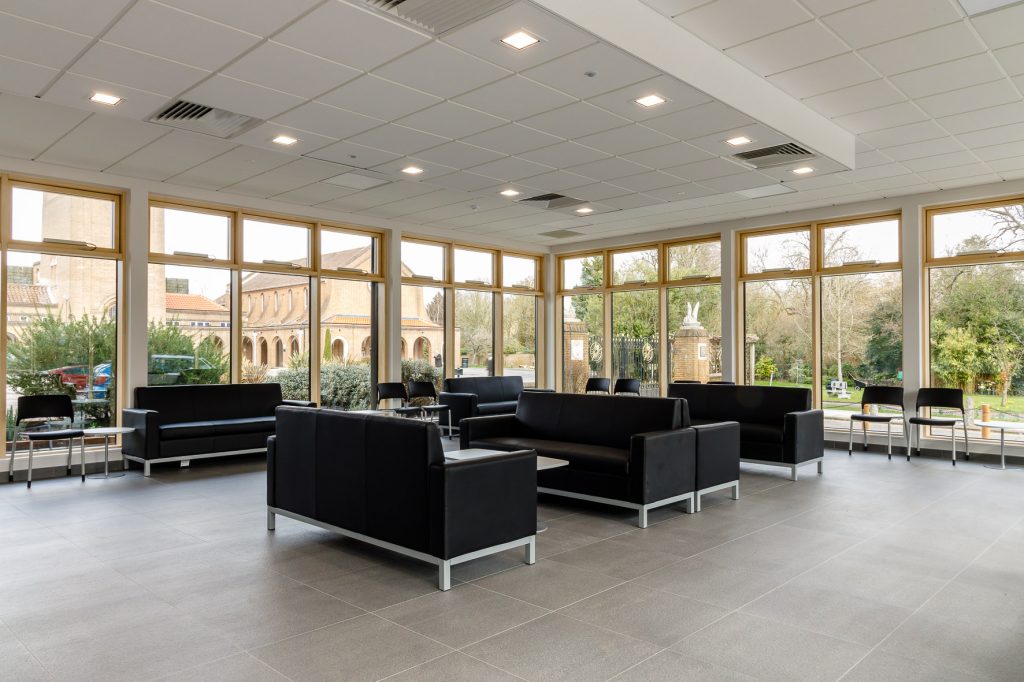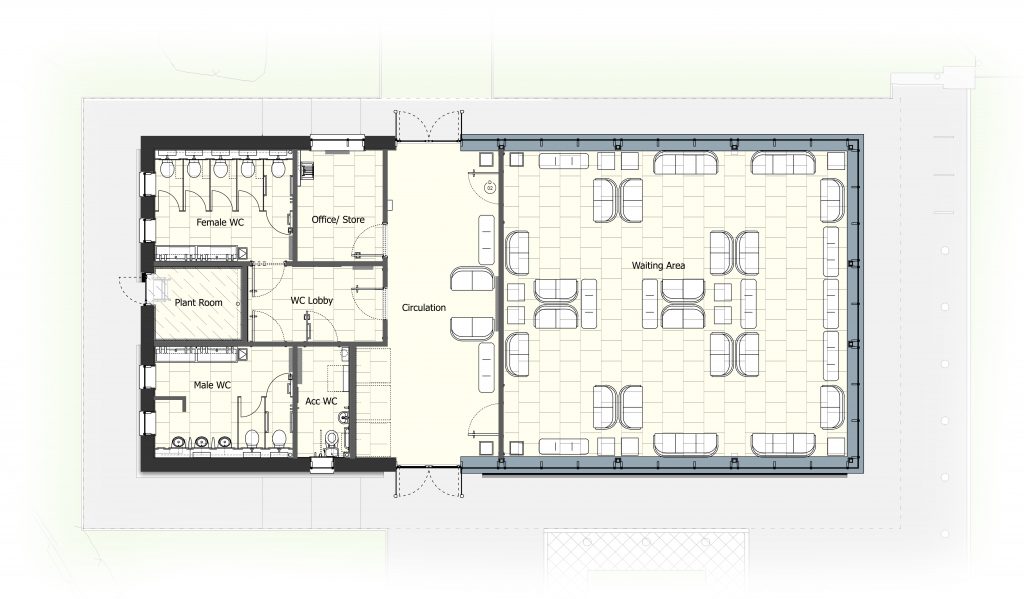South West Middlesex Crematorium is located to the East of Feltham town centre in close proximity to the River Crane. The site is approx. 4.11Ha in size and is mainly a landscaped park and memorial garden with the existing main Crematorium alongside a number of small service outbuildings used by grounds keeping staff Caretakers bungalows all set within it. The main Crematorium building was constructed in the early 1950s and accommodates three chapels, admin areas and memorial hall plus public waiting and gathering spaces.
Cremation services in Feltham are being more frequently attended by larger groups of visitors thus placing the existing car parking provision and spaces for buses / coaches and visitor services under increasing pressure, particularly when 2 or 3 chapels are in use. The gardens are also open at weekends when the main facilities building is closed.
The project therefore addresses these existing issues / concerns, firstly by the creation of a new welfare building located adjacent to the main forecourt to the Chapels and secondly by the provision of enhanced vehicular and pedestrian circulation around the site, which currently is not intuitive for visitors and are difficult for staff to control / manage.
The new visitor welfare building accommodates a large waiting / gathering space, visitor WCs and a cafe area. The new building is separated from the main Crematorium by the courtyard, allowing visitors to gather / wait safely and comfortably without disrupting any ongoing services. A small meeting room enables staff to meet with visitors or provide family members with a private area without needing to enter the main building.
The design is a response to the existing aesthetic of the main crematorium cluster, dominated by the vertical tower to the centre of the existing building. By adopting a low profile pavilion form, the new visitor centre allows this feature and the profile of the 2 main chapels alongside it to retain their prominence within the site. The location for the building to the west of the main axial route from the main entrance carefully considers these vistas as well as acknowledging the main external circulation routes. At the same time the siting negotiates the substantial existing mature trees and the areas of consecrated ground in the surrounding landscaped park.
The elevational treatment of the building mirrors the interior functional organisation, the public waiting areas are extensively glazed to provide views back onto the gardens and chapels while the ancillary functions, such as W.C.s and plant, are located away from the more public side and clad in Portland masonry with small punched windows. The use of a slender steel frame allows the roof to float over the building while the large overhang further suppresses the vertical dimension and provides for a further sheltered area to the building perimeter. Entrance doors are placed on the main pedestrian access with level thresholds and are fully automatic opening.
Materials have been chosen that are complementary to the site and public nature of the centre, with internal timber window framing echoed by the cedar wood cladding to the soffit and the vertical screen to the west the shields the service entrance way and service penetrations from view. The building fabric selection also aims to reduce heating and cooling requirements combined with natural / mixed mode ventilation strategy to minimise mechanical ventilation equipment Other sustainable features include an extensive area of green roofing with integrated photo voltaic panels, Implementation of SUDs measures energy efficient lighting both internally and externally particularly reduction of obtrusive light spill.
Alongside the physical centre and as noted above, the project also encompassed re configuring the circulation to the main crematorium and measures to ease both the vehicular flow and legibility of routes for pedestrians, resolving the conflicts between them.
The car parking has been extended and rationalised to allow a greater number of spaces to be created, particularly for elderly and disabled drivers and new and existing connecting foot paths have been widened and repaired to ensure pedestrian and vehicular segregation and safety.
